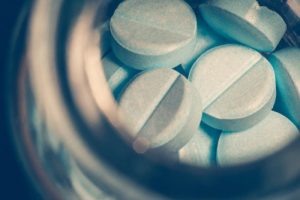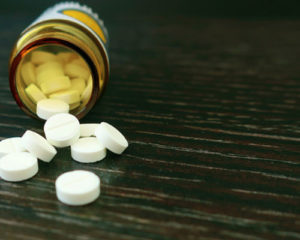Never has a single class of drug caused such rampant destruction. The United States continues to see record-breaking overdose and drug use statistics with over 64,000 overdoses in 2016 alone. Opioids are the largest contributor to overdose deaths in the U.S. Opioid withdrawal symptoms cause powerful drug cravings and are difficult to get through without using. If you are struggling with an opioid use disorder, it’s important to know what you’re up against when facing withdrawal.
What are the Opioids Withdrawal Symptoms?
Opioids cover a wide range of drugs from oxycodone to heroin that can act quickly or slowly over time. The type of drugs you are used to will affect your withdrawal experience. Opioid withdrawal symptoms come in two phases. The first phase involves symptoms that are similar to the common cold and the second phase takes on flu-like symptoms.
Besides physical symptoms, opioid withdrawal may also come with emotional and psychological symptoms. Anxiety and agitation may accompany the first phase and depression can occur in the second phase. In some cases, depression can result in thoughts of suicide, in which case, it is essential to seek help from a doctor or addiction specialist.
The first phase of withdrawal symptoms includes:
- Agitation
- Anxiety
- Body aches
- Increased tearing
- Insomnia
- Runny nose
- Sweating
- Hot and cold flashes
- Confusion
- Dehydration
- Lethargy
In the second phase, symptoms will start to peak and may become more uncomfortable. Symptoms include:
- Cramping
- Diarrhea
- Pupil dilation
- Goosebumps
- Nausea
- Vomiting
Strong drug cravings are the most prevalent symptom of withdrawal. When that is added to the host of other uncomfortable symptoms, it can be tough to get through opioid withdrawal on your own.
Though opioids don’t have some of the dangerous withdrawal symptoms that are seen in other drugs (like alcohol and benzodiazepines), it can be a challenge to get through. Because opioid withdrawal is so hard to withstand, people often relapse when they try to detox on their own. Medical detox is the safest way to get out from under the oppression of opioid addiction.
What are the Stages of the Opioid Withdrawal Timeline?
The opioid withdrawal symptoms you experience might depend on your level of chemical dependency. Symptoms can range from moderate to severe based on the length of time you’ve been using the drug, how much you’ve been using, and the dosage to which you are tolerant. The size of your last dose may also play a role.

Of course, the most common symptom of opioid withdrawal is a severe craving for the drug of abuse. Nearly irresistible draws to continue using can lead to drug-seeking behavior or seeking alternative opioids to your drug of choice like heroin.
Drug cravings can also come with other withdrawal symptoms that will start out mild and increase in intensity. There are two different categories of opioids, and each one comes with a distinct withdrawal timeline. Short-acting opioids, like codeine and fentanyl, can start causing early symptoms between six and twelve hours after your last dose. Long-acting opioids, like methadone and buprenorphine, can take thirty hours before symptoms begin.
The early cold-like symptoms will come first and last a few days. After around 72 hours, your symptoms will peak, mimicking the flu. At the 72-hour mark, withdrawal symptoms will start to dissipate. Most symptoms will be gone after one week, but fatigue, depression, anxiety, and insomnia may persist for as long as a month or more. If symptoms last longer than a month, talk to your detox medical professional.
Why Should I Detox?
If you quit cold turkey, opioid withdrawal can have extreme effects on your body and mind. Abrupt discontinuation is especially risky when you have been using high doses for a long time. The higher your tolerance, the more intense your comedown will be. If you experience potent symptoms and intense drug cravings, you might not be able to resist the urge to use again, which would mean that you would have to start from the beginning again.
Dehydration is present in the first stage of withdrawal when you start to sweat. If you begin to experience confusion, vomiting, diarrhea, and extreme fatigue, it can create a dangerous situation. Dehydration comes with its own set of symptoms which can lead to medical complications.
In medical detox, licensed professionals and experienced clinicians can help wean you off opioids safely and comfortably. A medical detox program can ease symptoms with anti-anxiety medication and other helpful medications. Going through the emotional issues while withdrawing alone can be dangerous and exacerbate the psychological symptoms.
Having help along the way can be a crucial step in successful detoxification. Medical detox can also help keep you accountable to your commitment to free yourself from addiction. Detoxing alone or even with friends can lead to using when the symptoms become unbearable. Caring clinicians can help keep you on track all the way through the detox process.
What is the Next Treatment Step?
Addiction recovery doesn’t end after you finish detox. According to the National Institute on Drug Abuse, staying in addiction treatment for enough time is crucial to a successful recovery. Research suggests that most people need at least three months of treatment to facilitate lasting recovery. However, it’s important to be committed to the continuum of treatment.
The continuum of treatment refers to addiction recovery that starts with detox, moves to residential or intensive outpatient treatment, and then slowly scales back in intensity. In addiction treatment, your program should offer a combination of therapies that are ideal for you. However, you should ideally be involved in some addiction support group long-term. This continual commitment is the best way to ensure lifelong sobriety and healthy drug-free life.
